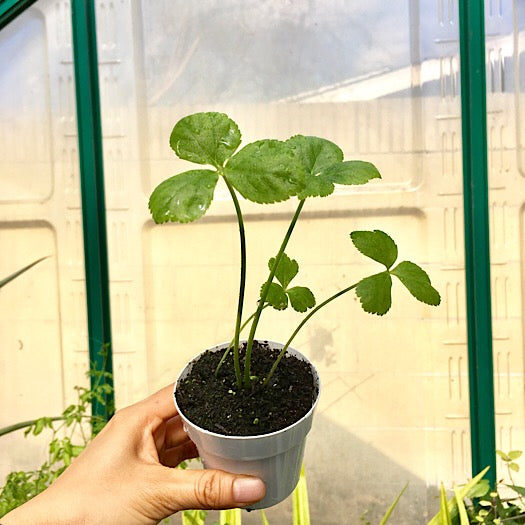See How Ashitaba Grow! March 01 2018

Seed Germination
When it comes to sprouting Ashitaba seeds, you will have a much higher chance of germination when using fresh seeds. Although there are different methods growers suggest on how to start Ashitaba seeds such as soaking, or soak then refrigerate, or keep them in moist paper towel...However, when seeds are freshly harvested from the mother plant, there is no extra work needed to get them to sprout in my experience. Here in Gardens of Wendiland, sometimes you will see seeds that have fallen off the plants will volunteer to grow in the ground.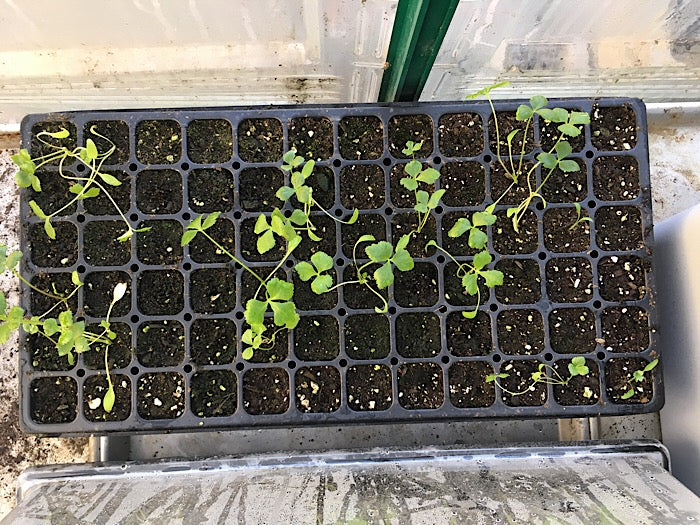
Although fresh seeds will germinate a lot easier than old, Ashitaba still has a much lower germination rate compared to other vegetables (see photo). They also take much longer to germinate. Mine took about 3-4 weeks, so be patient! Tip! Seeds sprout better in a high humidity environment so use a dome, or something to cover the growing area to keep the air moist. This is extremely important for dessert growers.
Ashitaba prefers to grow in rich organic matter such as compost, worm castings, ocean matters, bio char, rock dust. Keep soil moist, but well drained. You can add perlite to create light, fluffy potting soil if you are making your own.
In Southern California, the sun is strong so it’s best to grow them in part shade. If grown in cooler climate, it can tolerate full sun. However, it’s always best to slowly introduce the plant from full shade to full sun to prevent the leaves from burning or causing shock to the plant.
Watch Baby Ashitaba Grow!
WEEK 1-4 SEED GERMINATION
WEEK 5-8 FIRST SET OF TRUE LEAVES DEVELOPED
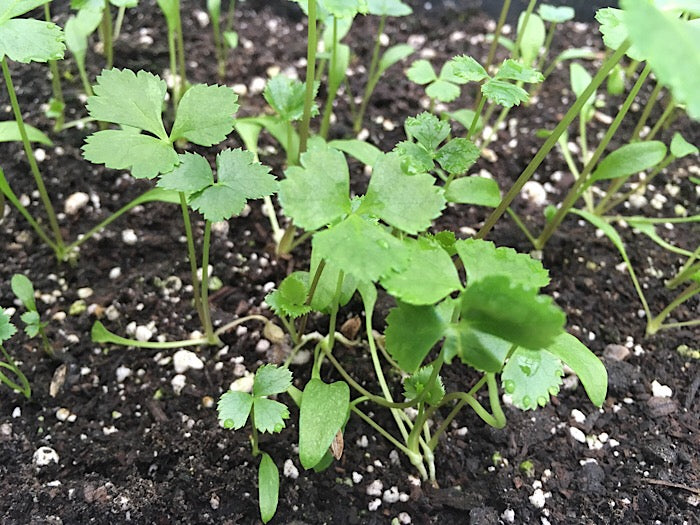
WEEK 9-11 FIRST TRANSPLANT TO SMALL POTS
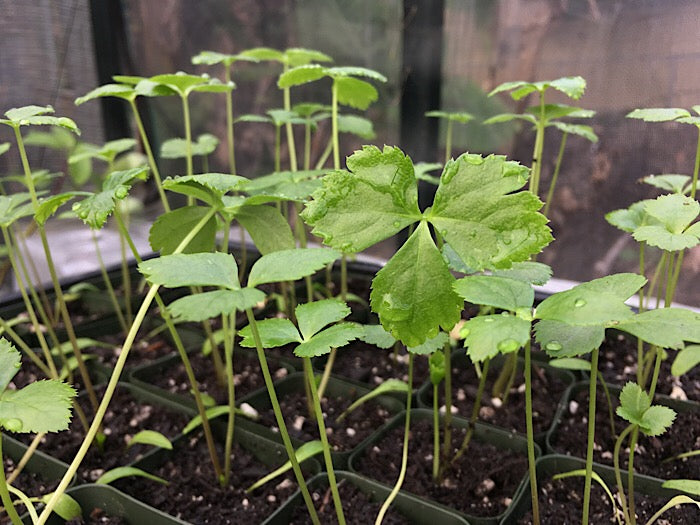
WEEK 12-15 PLANTS ESTABLISHING, DEVELOPING STRONG ROOTS
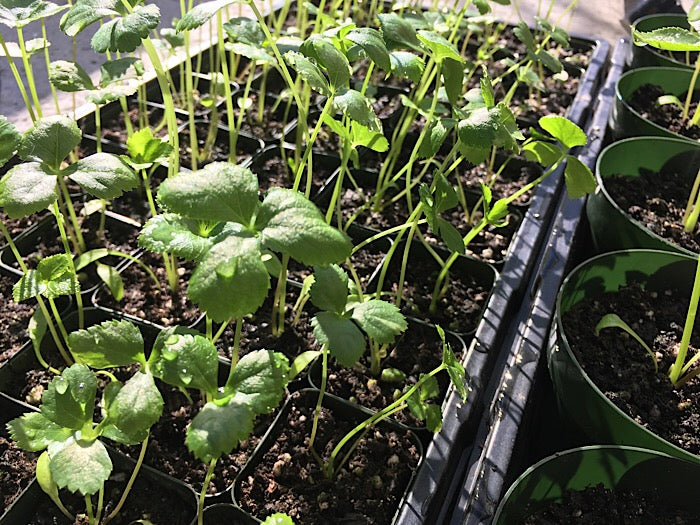
WEEK 16-24 TRANSPLANT TO NEXT SIZE POT, HARDENING, ESTABLISHING ROOT SYSTEM
